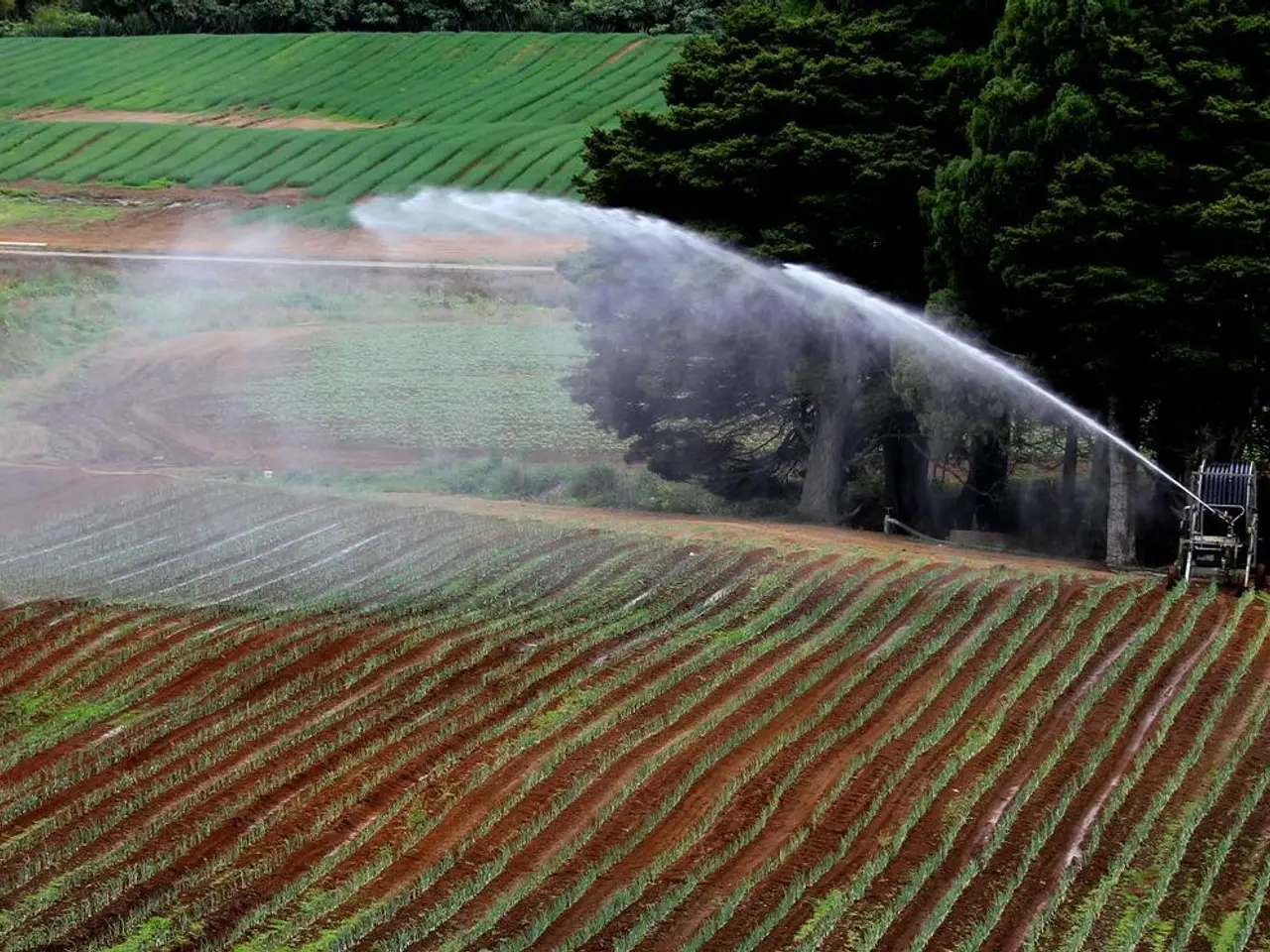India's first Agri-Photovoltaics Summit, aimed at connecting clean energy and agriculture, is being spearheaded by Odisha.
In a groundbreaking move, the Odisha government recently hosted the first Agri-Photovoltaics (APV) summit, SunKranti APV 2025, aiming to integrate solar power with agriculture. This innovative approach, which allows crops to grow beneath or around solar panels, promises to enhance land productivity and offer farmers an additional source of revenue.
The summit, organised by Passing Gifts, brought together key figures from various sectors to discuss the potential of APV. Dr Satyapriya Rath, managing director of GRIDCO, and Dr D.K. Singh, principal scientist at IARI, were among the panelists. Rina Soni, executive director of Passing Gifts, expressed her vision for SunKranti APV 2025, stating that it represents the convergence of innovation, inclusion, and action, aiming to create a replicable model where clean energy and agriculture thrive together.
The summit highlighted Odisha's first community-led APV pilot in Koraput, initiated by Passing Gifts in collaboration with the Indian Council for Research on International Economic Relations (ICRIER). This pilot integrates solar infrastructure with active cropping, empowering tribal farmers in remote regions.
Integrating APV in rural development in Odisha offers multiple benefits. Maximized land use and productivity is one such advantage. By combining solar panel arrays with crops, APV systems produce more food and energy per hectare than using separate land for farming or solar alone. This approach is vital in Odisha, where agricultural land may face pressure from development or climate impacts.
Climate resilience for crops is another key benefit. Partial shading from solar panels reduces heat stress and evapotranspiration, conserving soil moisture and extending growing seasons. The panels also provide protection from extreme weather such as hail or heavy rains, contributing to stabilizing agricultural yields.
Financial stability and income diversification are also significant advantages. APV offers rural farmers additional revenue streams by generating solar power that can be consumed onsite or sold to the grid. This diversification reduces dependency on crop income alone and shields farmers from agricultural market volatility.
Environmental and ecological benefits are also substantial. APV reduces pressure to clear new land for energy or farming, helping preserve biodiversity and natural habitats in the region. By supporting sustainable farming methods that improve soil health and water conservation, APV aligns with broader goals of environmental protection.
The alignment with government and renewable energy goals is another compelling reason for Odisha's embrace of APV. India's ambitious solar capacity goals (targeting 280 GW by 2030) coupled with rural development strategies can be supported by APV technology, accelerating rural renewable energy adoption and rural economic growth in Odisha.
Neena Joshi, senior vice president of Heifer International (the parent entity of Passing Gifts), believes that caring for the Earth is essential for sustainable development and that APV offers a powerful solution to address food security, energy access, and climate challenges.
Odisha's suitability for scaling up APV solutions is undeniable. With 300 sunny days a year and an average solar irradiance of 5.3 kilowatt-hours per square metre per day, the state presents an ideal environment for APV implementation.
The event emphasized the transformative potential of APV in improving rural livelihoods, particularly for smallholder farmers. Dr Arbinda Kumar Padhee, principal secretary of the department of agriculture, and Vishal Kumar Dev, Principal Secretary of Odisha's department of energy, both participated in panel discussions about APV and the role of Farmer Producer Organizations (FPOs) in its implementation.
Akshaya Biswal, Program Director - Odisha, Passing Gifts, focuses on empowering FPOs to lead the change in APV implementation. The Odisha energy department is planning for pilot implementations of Agri-Photovoltaics (APV).
The Odisha minister for fisheries and animal resources development, Gokulananda Mallick, stated that APV has the potential to bring a transformational shift in rural development, especially in integrating clean energy with allied sectors like fisheries and livestock.
In conclusion, the integration of APV in Odisha's rural areas can transform local economies by combining sustainable energy and farming, enhancing food and energy security, fostering climate resilience, and contributing to sustainable rural development.
- The summit, SunKranti APV 2025, advocated for a convergence of innovation, inclusion, and action in the field of environmental science, aiming to create a replicable model where clean energy and agriculture thrive together.
- In addition to enhancing land productivity for farmers, APV offers financial stability and income diversification, generating solar power that can be consumed onsite or sold to finance, reducing dependency on crop income alone.
- APV systems, integrated with home-and-garden spaces, contribute to sustainable living by reducing pressure to clear new land, preserving biodiversity, and aligning with broader goals of environmental protection.
- The Odisha government's interest in renewable energy, such as APV, offers potential for rural energy adoption and economic growth, supporting India's ambitious solar capacity goals of 280 GW by 2030.
- By improving climate resilience for crops, APV offers a solution to address ongoing climate-change challenges, while concurrently offering benefits in the realm of lifestyle choices, such as cultivating a sustainable-living home-and-garden environment.




